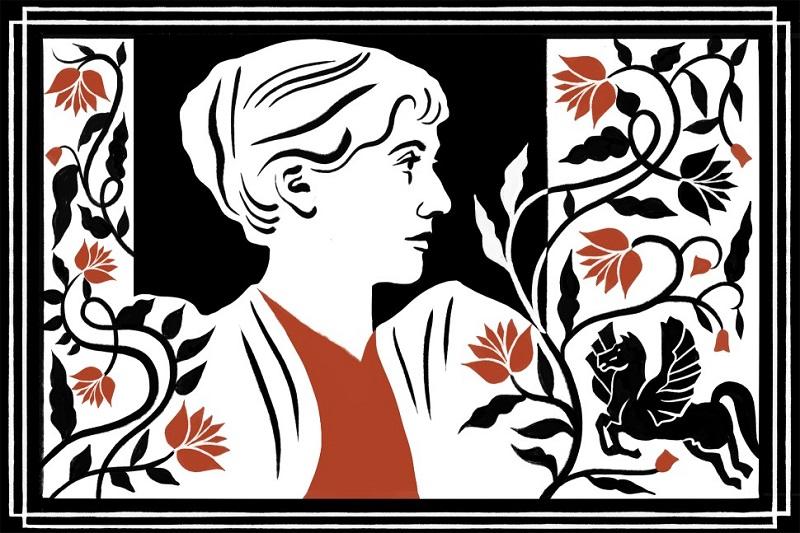
The temporary exhibition Harriet Monroe & the Open Door at the Poetry Foundation in Chicago showcases the fascinating line connecting today’s world-renowned poetry magazine back to a poem written for the 1893 World’s Fair. Archival documents and photographs on display with accompanying descriptive texts tell the story of Harriet Monroe, her “Columbian Ode” poem, and the landmark copyright lawsuit that helped launch Poetry magazine.
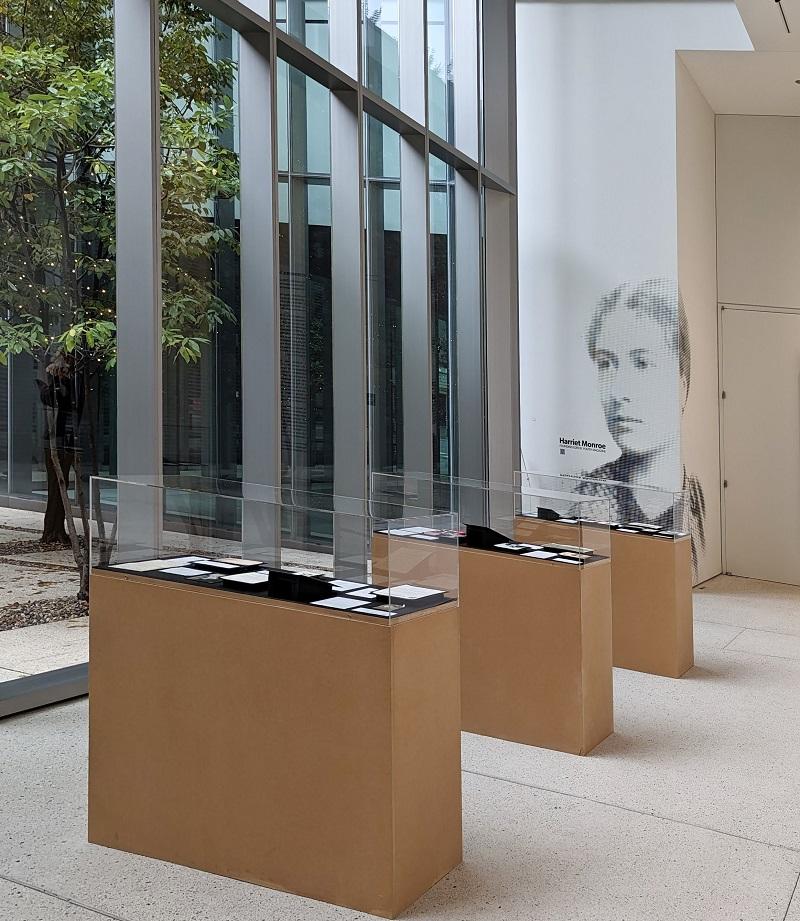
Part of the exhibition display for Harriet Monroe & the Open Door at the Poetry Foundation in Chicago.
In 1891, the Committee on Ceremonies of the Columbian Exposition invited Harriet Monroe to write a poem for Dedication Day. She delivered the “Columbian Ode,” a 2600-word poem that romanticizing Christopher Columbus’ 1492 voyage to America, the westward expansion of settlers across the continent, and the rise of the Midwest metropolis that served as host city for the World’s Fair. Monroe described her work as “a paean to Chicago, America, and universal brotherhood.”
For the Dedication Day address on October 21, 1892, actress Mrs. Sarah LeMoyne read several stanzas of the “Ode” while other selections were set to music by George W. Chadwick and sung by the Columbian Chorus under the direction of W. L. Tomlins. Likely only a small part of the more than 100,000 people inside the mammoth Manufactures and Liberal Arts Building that day heard any of it.
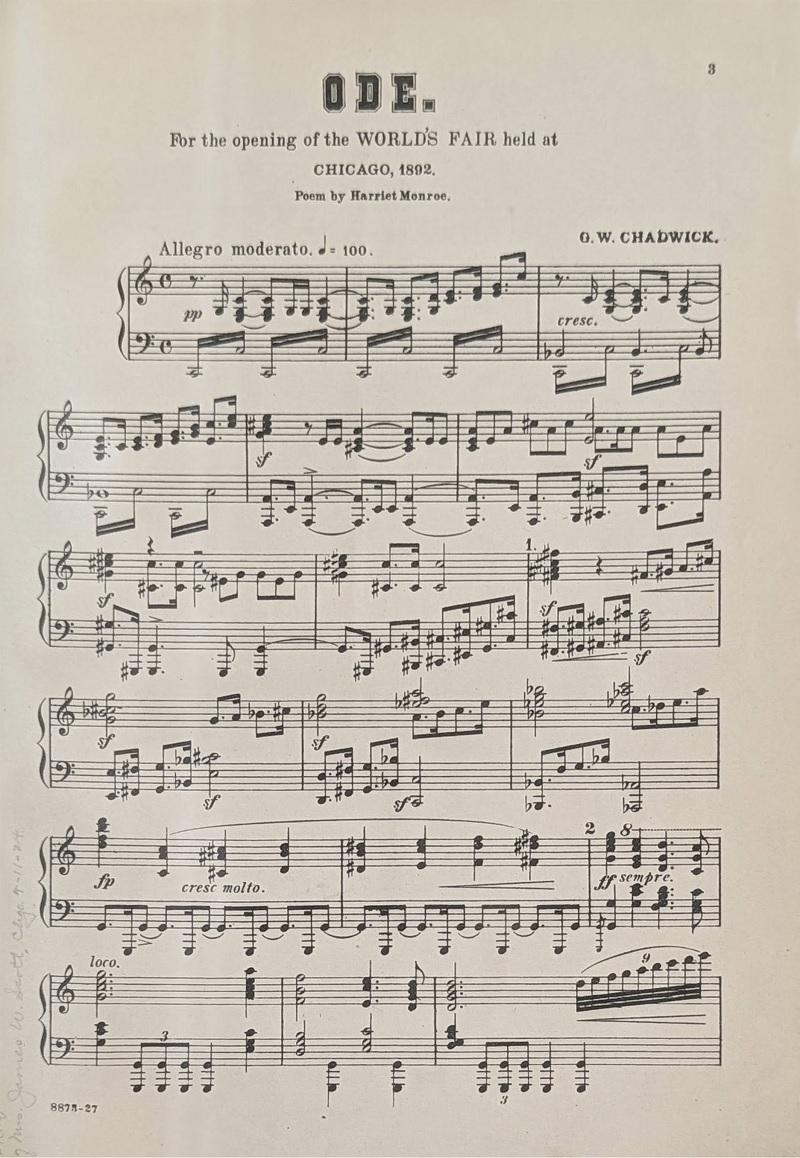
George W. Chadwick’s set several verses of Harriet Monroe’s “Columbian Ode” to music for the dedication of the Columbian Exposition on October 21, 1892. He published the sheet music through the John Church Co. in 1892 as Ode for the Opening of the World’s Fair held at Chicago, 1892.
The text of Monroe’s poem reached a much wider audience through publications. The New York World somehow obtained a draft copy of Monroe’s poem and printed it without her consent in their Sunday, September 25, 1892, edition—a month ahead of its public debut in Chicago. Monroe filed charges of copyright breach against the World, won a precedent-setting lawsuit against them, and was awarded a $5,000 verdict.

The second “Souvenir Edition” of The Columbian Ode, with a handsome cover design by Will H. Bradley, published by W. Irving Way & Company of Chicago in 1893.
Display cases in the exhibition feature the letter from Committee on Ceremonies awarding her the commission, a letter from Monroe to her sister complaining of those critical of her draft verse, Chadwick’s sheet music, an advertisement for the publication of the “Ode” as a souvenir booklet, a proof copy of the print publication, telegrams regarding the New York World’s internal investigation into the copyright status, and their original unauthorized printing filled with Monroe’s handwritten corrections of errors and changes the newspaper had made.
One section of the exhibition focuses on Monroe’s introduction to the Swami Vivekananda through his lectures at the Exposition. The display case contains portraits of both, a holograph page from the draft of Monroe’s autobiography that describes “the handsome monk in the orange robe,” and reproductions of several paintings depicting the fairgrounds (with artists uncredited for some reason).
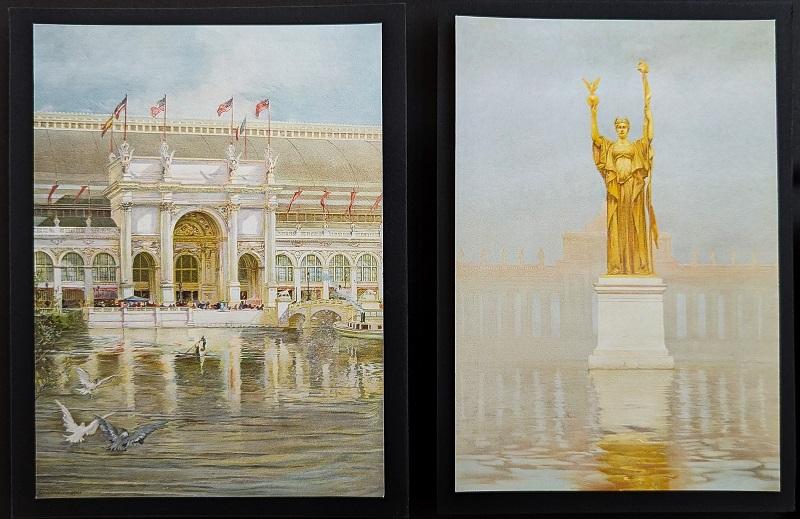
Small reproductions of (left) The West Portal of Manufactures Building by Edwin Blashfield and (right) The Statue of the Republic by Francis D. Millet.
A display case that addresses “Smeared by Dark Ironies: Contesting Columbus at the 1893 Chicago World’s Fair” features images of Christopher Columbus statue modeled by Mary B. Lawrence and Augustus St. Gaudens, and the strong rebuke of the Columbus legacy by Potawatomi leader Simon Pokagon through his “Red Man’s Greeting” address on Chicago Day at the Fair and its publication as the birchbark book retitled Red Man’s Rebuke, a rare treasure. The accompanying exhibition notes offer interesting parallels between the two figures.
As editor of Poetry, Harriet Monroe established an “Open Door Policy,” advocating for editorial openness to contemporary poems without allegiance to “any single class or school.” She guided the magazine for twenty-four years until her death in 1936.
Artist Lilli Carré has prepared original artwork to accompany the exhibit, displayed on one wall and available as a striking comic, The Amazing Harriet Monroe, the Origin Story of Poetry Magazine’s Founding Editor. A QR code on one wall provides visitors with a link to the Dedication Day musical program that we created for our YouTube channel.
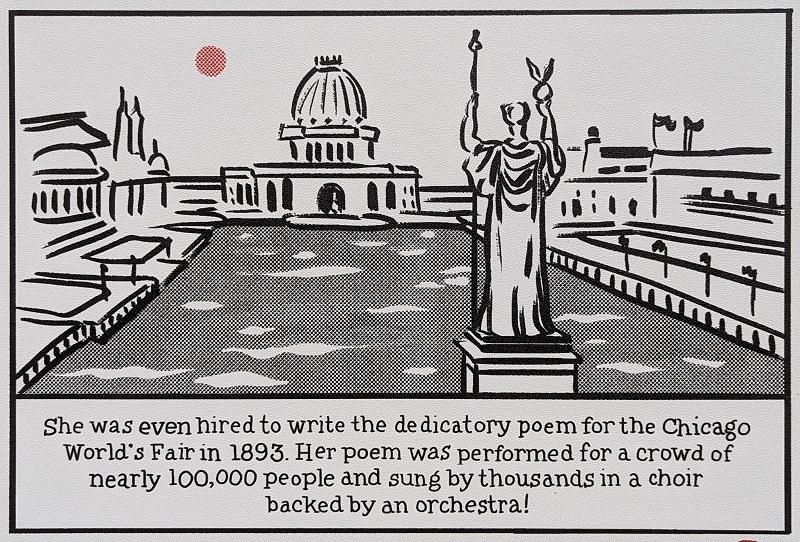
One panel from Lilli Carré’s booklet The Amazing Harriet Monroe, the Origin Story of Poetry Magazine’s Founding Editor depicts the Court of Honor at the 1893 World’s Fair.
Harriet Monroe & the Open Door runs from September 14, 2023, through January 13, 2024, at the Poetry Foundation (61 W. Superior Street in Chicago). The exhibition is free and open to the public.

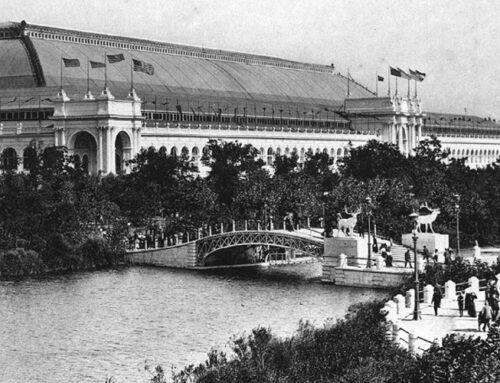
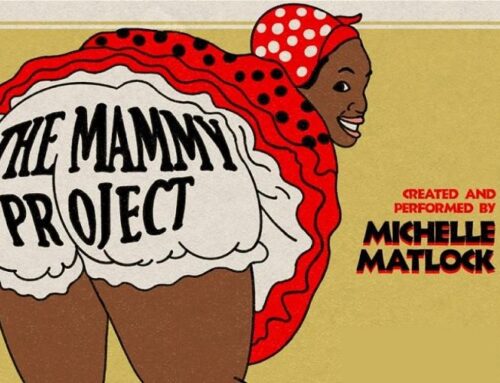
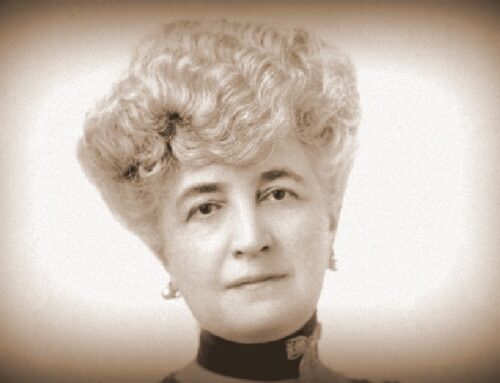
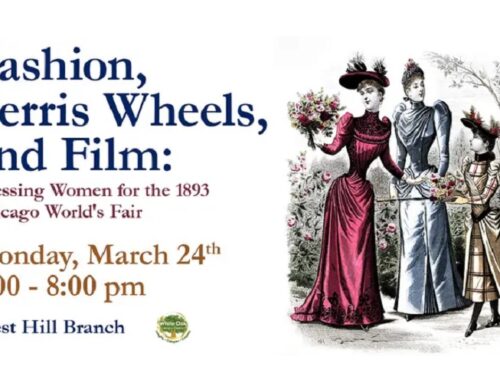
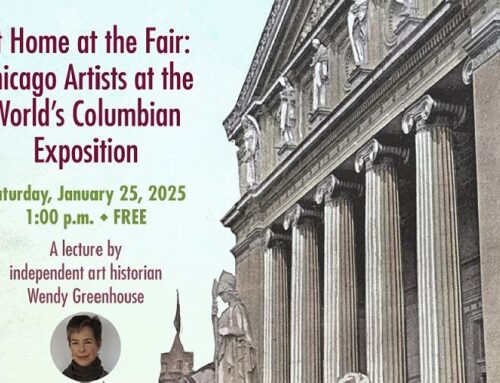
Leave A Comment